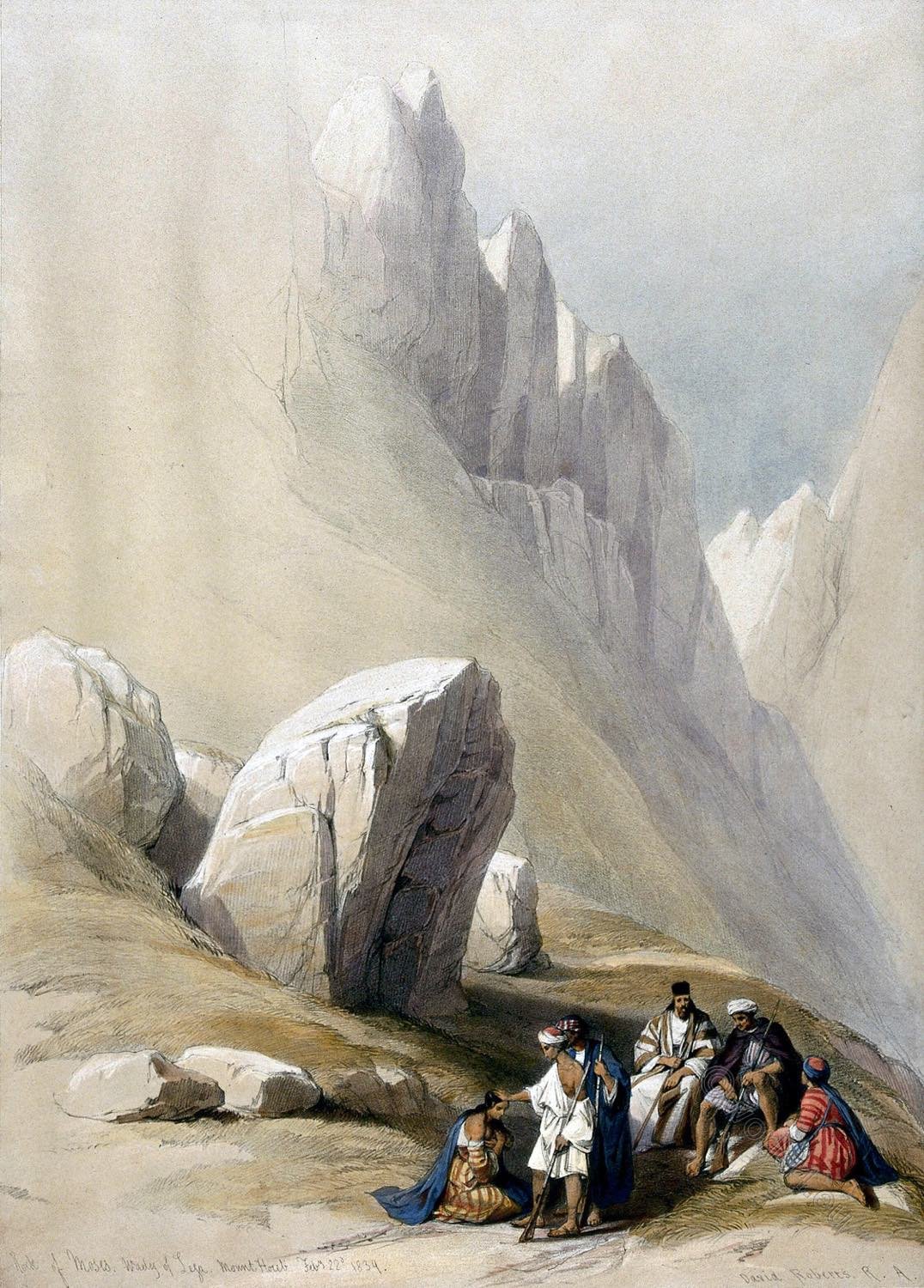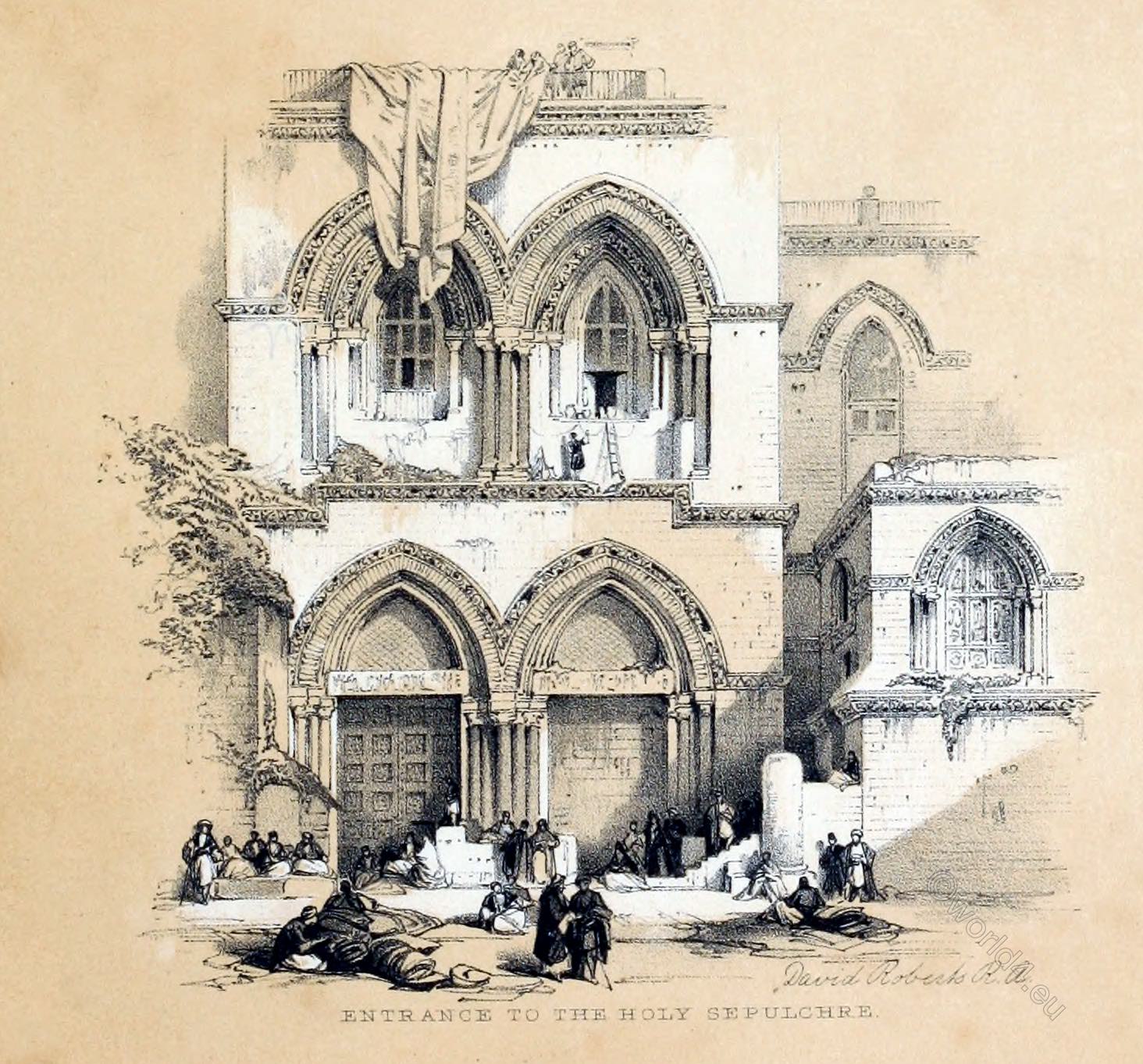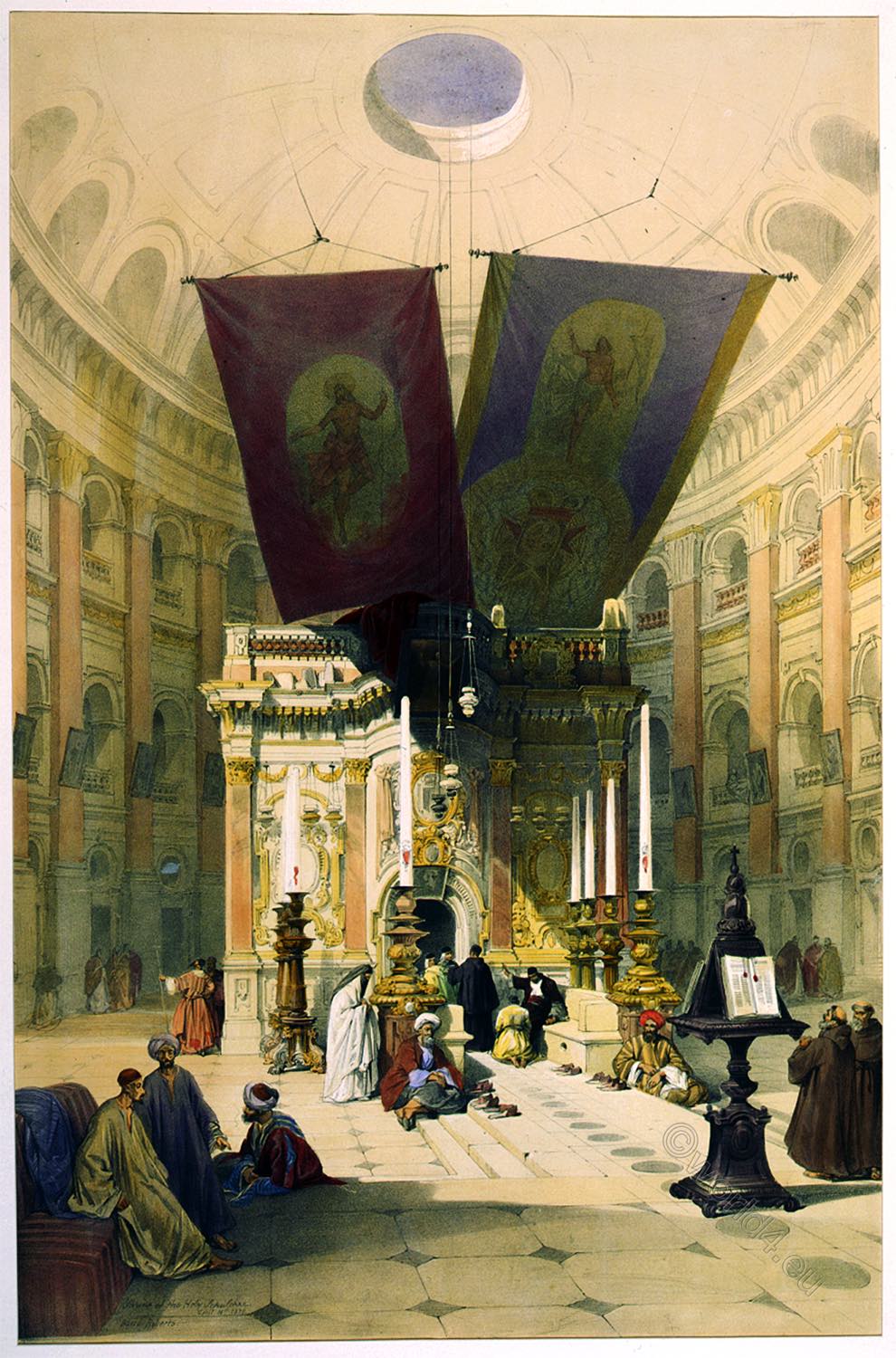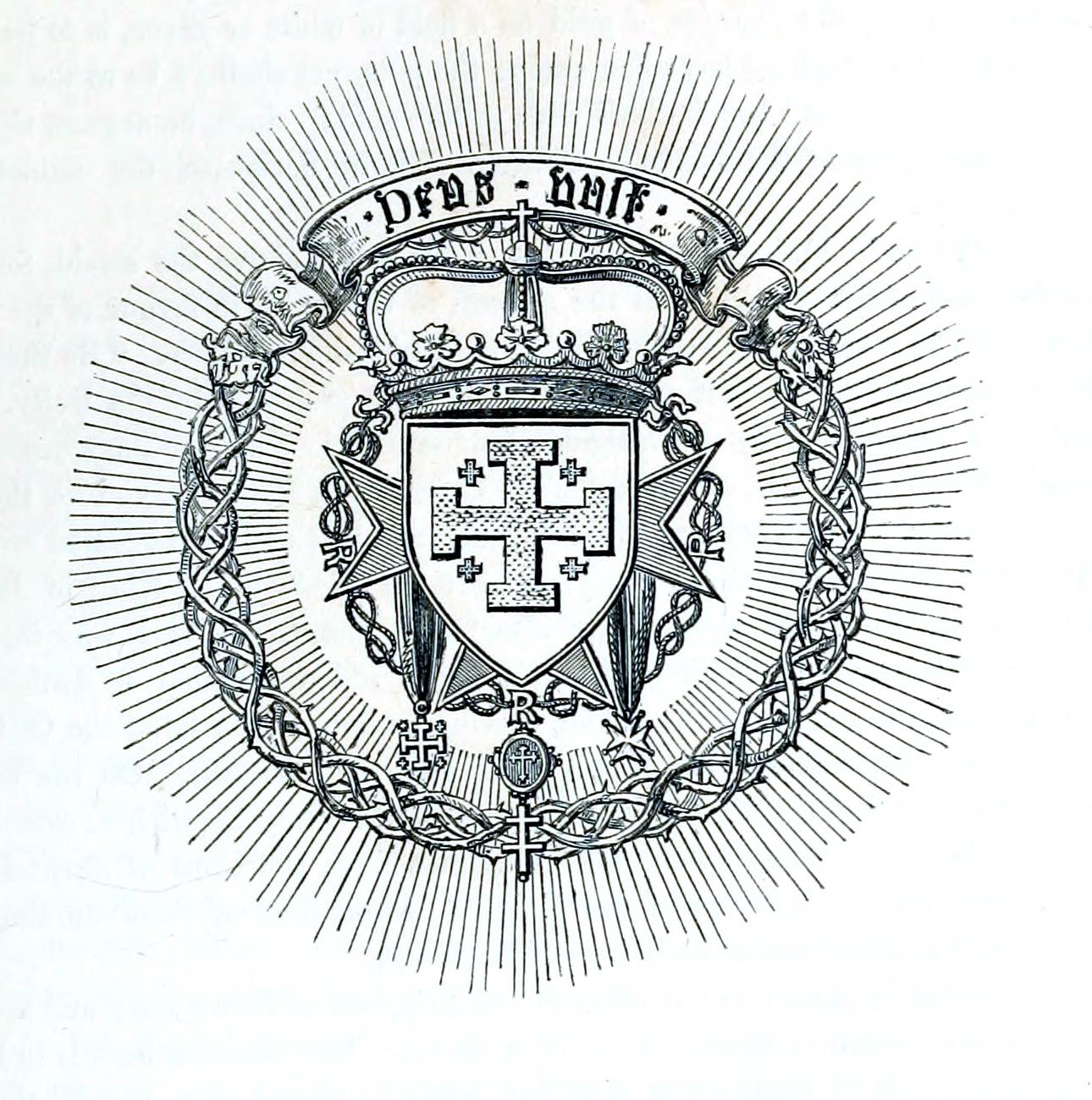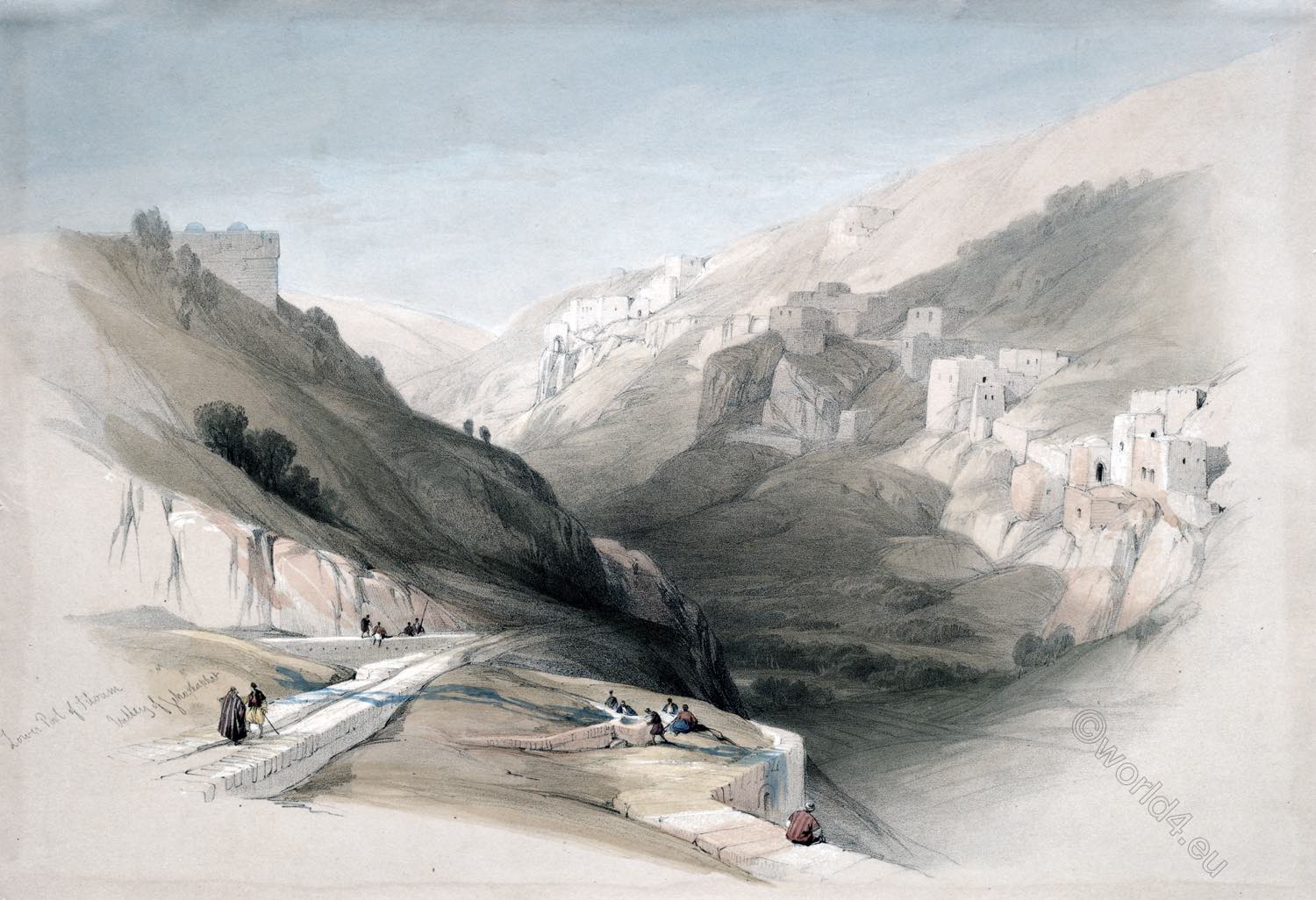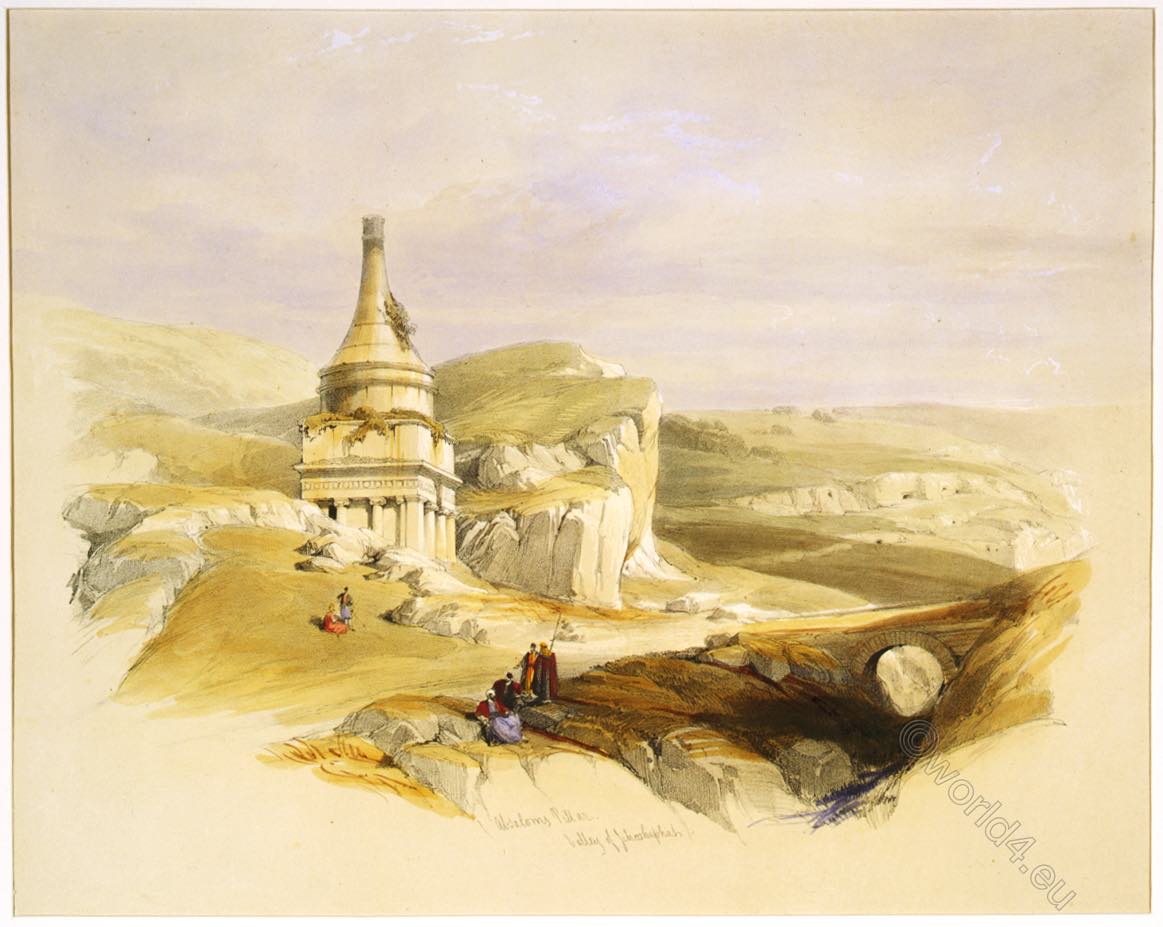
The Tomb of Absalom (Hebrew יד אבשלום Yad Avshalom) is an ancient funerary monument in the Kidron Valley near Jerusalem. It dates from the 1st century AD. The tomb monument is attributed to an aristocratic Jewish family from the Second Temple period; their name is not known.
The striking monument has had many names over the centuries: “Tomb of Hezekiah” (Pilgrims of Bordeaux, 4th century), “Tower of Jehoshaphat” (Arkulf, 7th century), “Cooking Pot” (Phocas, 12th century). Traditional Arabic names are “House of the Pharaoh” or “Cap of the Pharaoh”.
THE PILLAR OF ABSALOM.
In the Valley of Jehoshaphat one of the most striking features is a group of four tombs, one of which has been traditionally named with reference to the Sacred record. “Now Absalom in his lifetime had taken and reared up for himself a Pillar, which is in the king’s dale: for he said, I have no son to keep my name in remembrance: and he called the pillar after his own name: and it is called unto this day. Absalom’s place,” 1)
Josephus mentions the “pillar” 2) as about three furlongs from the city, which corresponds sufficiently to the distance of the present structure. But Absalom died on the east of Jordan, and was probably buried on the field where he fell. 3)
This monument stands close by the lower bridge over the Kedron. It is a square isolated block, hewn out of the rocky ledge. The body of the block is twenty-four feet square, having on each face two columns and two half columns of the Ionic order, with pilasters at the corners, and an architrave exhibiting triglyphs and Doric ornaments.
To the top of the architrave the elevation is about twenty feet. Above this the work is masonry, consisting of a large layer, with a smaller one above it, and the whole surmounted with a small dome with a spire, gracefully expanding at the summit like the bell of a flower.4 The tomb contains a small chamber.
The entire height is about forty feet. The effect of the work is picturesque, and is of the same taste, if not of the same age, as those at Petra, in which the peculiarity exists, that the outer pillars join the pilasters at the angles.
The numerous excavations along the whole line of rock appear, like those at Petra, to have been more probably dwellings than tombs.5 The Mahometans, Jews, and Christians, as they pass, throw stones into the aperture of the tomb, as a mark of abhorrence for the memory of the rebellious son.
1) Samuel, xviii. 18. 2) Josephus, B. 20. 3) Samuel, xviii. 17. 4) Biblical Researches, vol. i. p. 519. 5) Roberts’s Journal.
Source: The Holy Land, Syria, Idumea, Arabia, Egypt, & Nubia, by David Roberts, George Croly, William Brockedon. London: Lithographed, printed and published by Day & Son, lithographers to the Queen. Cate Street, Lincoln’s Inn Fields, 1855.
Continuing

